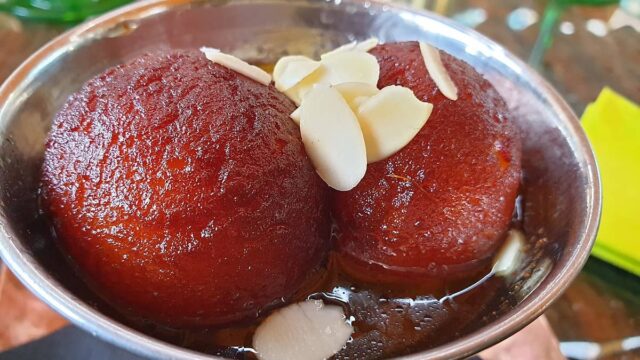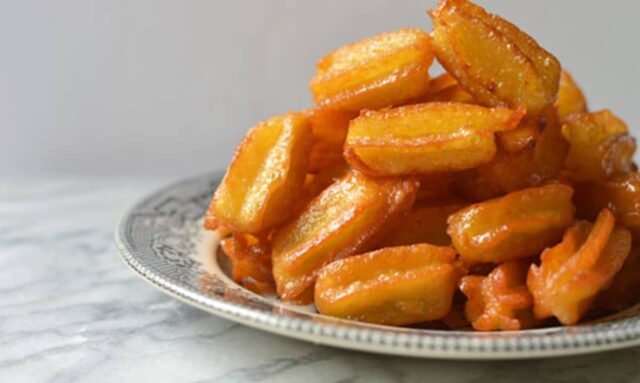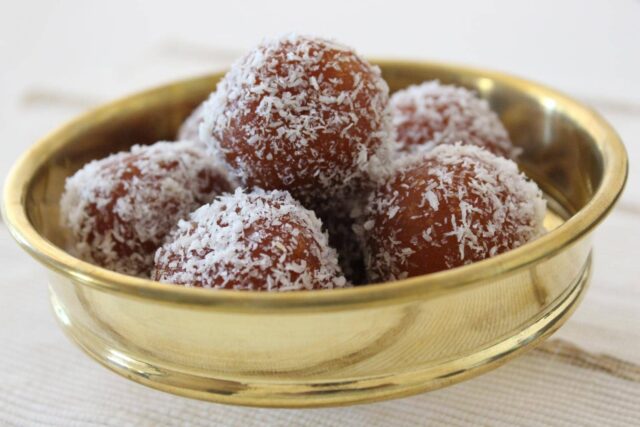India is a land of rich heritage and culture and along with these comes the beloved and adored, Gulab Jamun. The answer to almost every Indian’s favourite desi dessert is undoubtedly the Gulab Jamun.
The traditional sweet finds a place in the midst of every occasion, be it an auspicious festival or the celebration of a raise at work. It has also been declared as the national dessert of Pakistan. Gulab Jamun really took its name seriously and has been winning over billions of hearts since!
However, this dessert has a trick up its sleeve. The origins of the Gulab Jamun do not lie in the crevices of the Indian soil. It has been a matter of debate that the dessert was accidentally created during the medieval period by Shah Jahan’s personal chef, however, the truth differs a tad bit from that theory.
Gulab Jamun is actually a native of Persia and is extremely similar to the Arab dessert, Luqmat-Al-Qadi, which was introduced in India by the Mughal rulers.
The Origins And Variations Of Gulab Jamun
Our beloved Gulab Jamun has glaring similarities in terms of texture, taste and ingredients with the Persian Bamieh and the Turkish Tulumba. All of these desserts are spongy balls of fried dough soaked in a sugar syrup. The only difference is that Bamieh and Tulumba are served cold whereas Gulab Jamun is preferred piping hot.
The etymology of Gulab Jamun is quite interesting to learn about. The origins of the name are Persian in nature where ‘gul’ means flower and ‘ab’ means water. The word ‘jamun’ is the name of a local dark-coloured fruit.
The Arab dessert, Luqmat-Al-Qadi, is extremely similar to the Gulab Jamun as well. However, the Arab dessert is dipped in honey and sprinkled with sugar and its batter is different and lighter than the Indian version. The name Luqmat-Al-Qadi literally translates to “the judge’s morsel” and has been rumoured to sway judicial opinions once upon a time.
The passing of the years encouraged different regions to do what they always do best: they started adopting their methods of making the dessert. The Gulab Jamun quickly shaped into Pantua, a loved and adored dessert of Kolkata. The Pantua is almost the same as Gulab Jamun, except its center is filled with mishri.
On the other hand, Pantua gave birth to Langcha, another Bengali dessert which is similar to the Gulab Jamun with the exception of its shape.
Read More: Watch: Fusion Desserts To Bring Home This Festive Season
As one travels to the south of the country, they are met with the dry jamun of Kumbakonam, which has a smaller sizer and crispier crust than its original counterpart. The crust is also dusted with sugar instead of being soaked with syrup.
The Kaalo Jam, famous in Bengal, is yet another variant of this diverse dessert. The basics of both the desserts are the same with the exception of their colour. Kaalo Jam has a rich purple-black colour as compared to the golden brown of the Gulab Jamun, which happens due to the sugar mixed in the batter being caramelized as the sweet is fried at high temperatures.
An Essential Part Of Our Traditions
India believes in upholding our culture and holding onto traditions. Our dresses, behaviour and sanskar is what makes us Indian and different from the rest of the world. Food is definitely an essential part of our culture. Every state in the country is unique. Their traditions, outfits, cuisine, language and culture is different.
However, Gulab Jamun definitely unites us in the sweetest way possible. We have adapted the dessert and given it a unique twist in every region but the golden little balls of delight incite the same feelings and words of awe from every person who consumes them!
Image Sources: Google Images
Sources: TimesOfIndia, TheBetterIndia, IndiaTimes, IndiaMarks +more
Meet The Blogger: Charlotte
This Post is Tagged Under: Gulab Jamun, desi dessert, traditional sweet, national dessert, Pakistan, Indian soil, Shah Jahan, Persia, Arab dessert, Luqmat-Al-Qadi, Mughal rulers, Persian, Bamieh, Turkish, Tulumba, the judge’s morsel, Pantua, Langcha, dry jamun, Kumbakonam, Kaalo Jam, culture, traditions







































